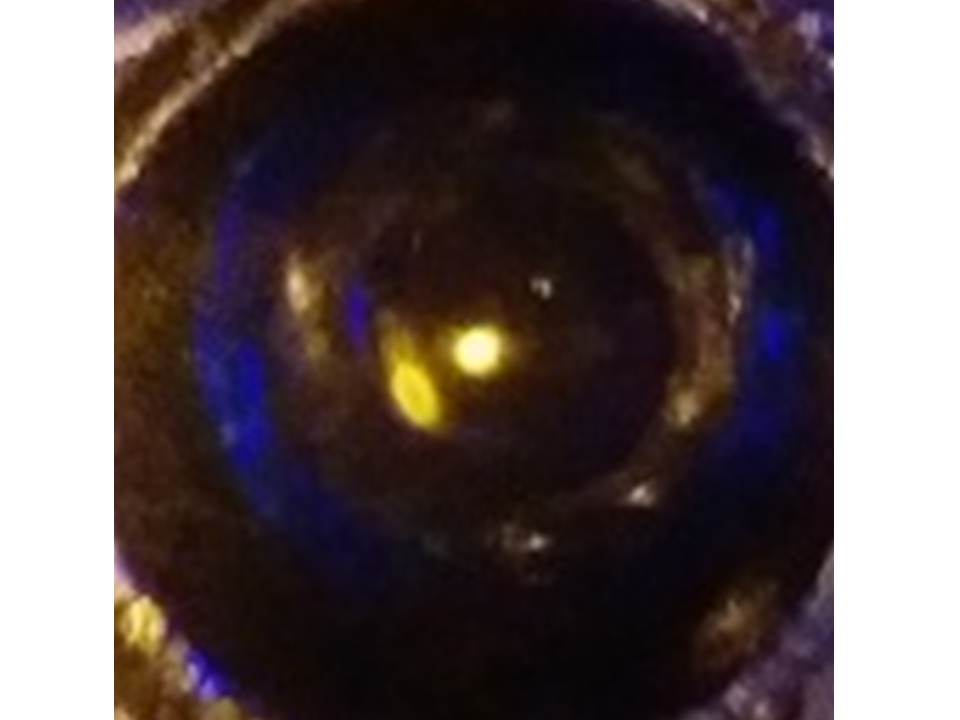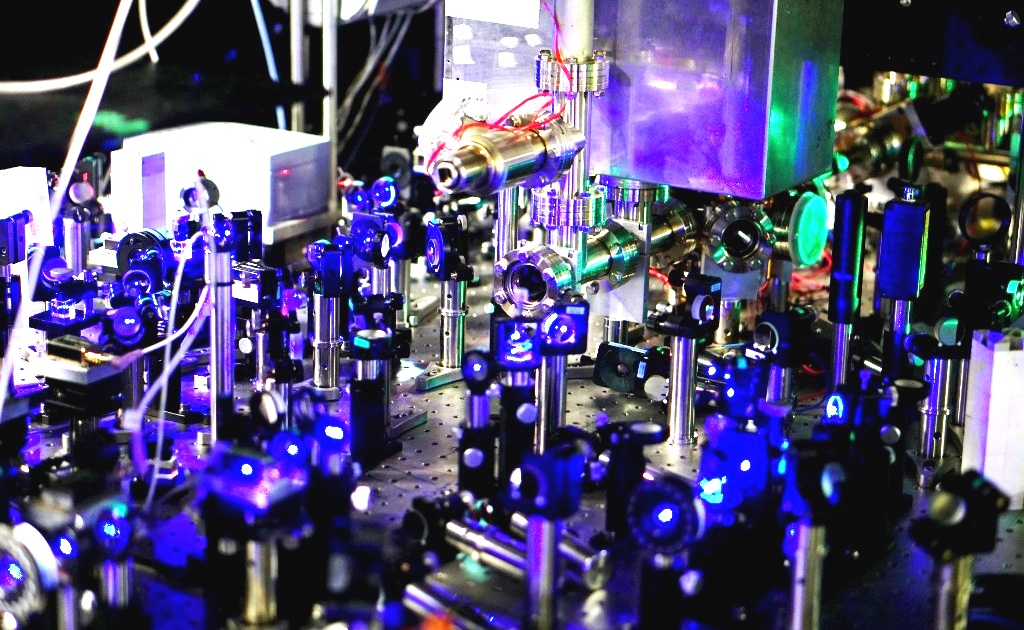
Recently, we have succeeded in laser-cooling the europium (Eu) atoms for the first time in the world. We are now trying to create Bose-Einstein condensate of Eu atoms. BEC of Eu atoms will provide us with the opportunity to explore the unique physical properties of the magnetic quantum gas. The photograph shows the experimental apparatus for Eu atoms.
Bose-Einstein condensate of neutral atoms is in nK order of ultra-low temperature, and the interaction between atoms is usually dominated by short-range isotropic s-wave scattering. However, when atomic species with large magnetic moment are employed to generate Bose condensate, the long-range anisotropic interaction will work between atoms, and a novel physical phenomenon will appear. Here, the term "long-range" means that the interaction between magnetic moments decreases by the third power of the relative distance, although Van der Waals force between atoms decays by the sixth power of the distance. The fact that the interaction is anisotropic can be easily understood as follows. The interaction is repulsive when the two magnetic moments are parallel, and is attractive when the two magnetic moments are aligned on a straight line.
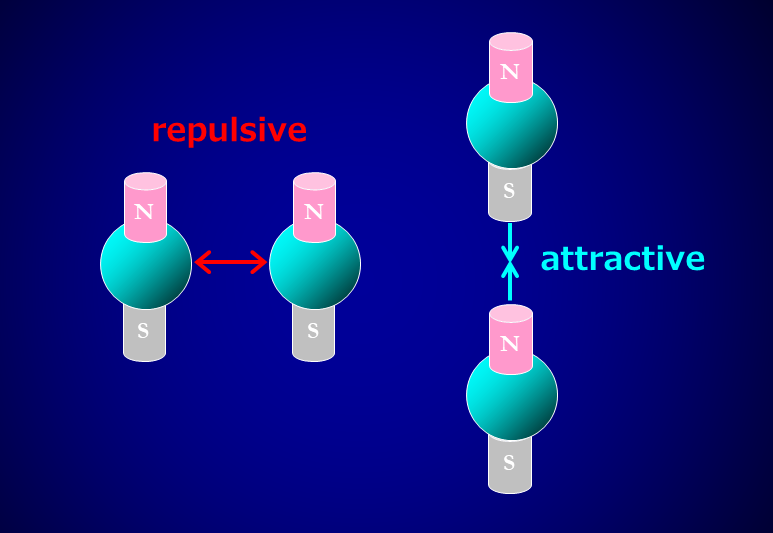
Laser cooling and Bose-Einstein condensation of atomic species with a large magnetic moment have started from chromium (Cr: mass number 52) having the magnetic moment of 6 Bohr magnet. Dysprosium (Dy: mass number 164) and erbium (Er: mass number 168) having 10 and 7 Bohr magnets, respectively, have also been studied. By using these atomic species, novel and universal phenomena have been successfully observed. Here I would like to give a brief explanation of the observation of Normal-field (Rosenweig) instability using Dy atoms. You might have seen "magnetic fluid" that is a mixture of magnetic particles with oil. When a magnetic field is applied to this magnetic fluid, the liquid surface deforms, and regular protrusions appear, that is called Normal-field (Rosenweig) instability.
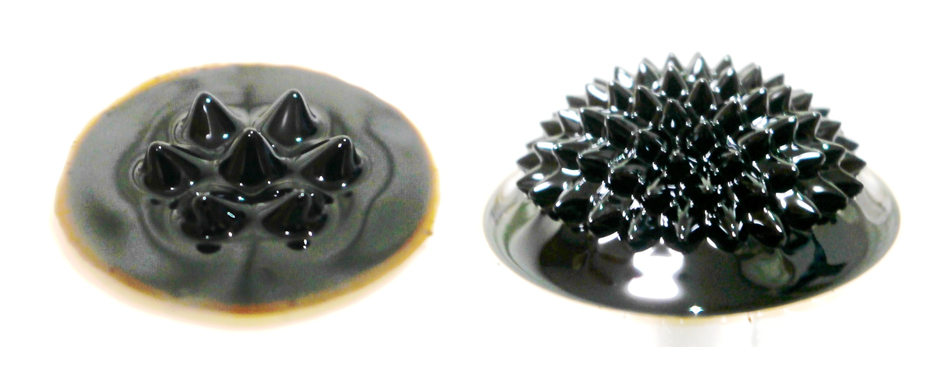
By applying a static magnetic field to the condensate of Dy atoms with a large magnetic moment, we can observe the same phenomenon as this. It is considered that the regular protrusion structure generated in Bose condensate of Dy is deeply related to "supersolid" where density periodicity and superfluidity coexist. Besides, d-wave decay in which Bose condensate diffuses in free space in the form of cloverleaf has been successfully observed. The quantum magnetic gas provides us with a variety of bizarre phenomena on the many-body system.
To explore physical phenomena unique to magnetic quantum gases, we have to prevent long-range anisotropic interaction caused by magnetic moments from being buried in short-range isotropic s-wave scattering interactions. Such a condition is given by
μ0μ2m/12πℏ2a > 1
Where μ is the magnetic moment of the atom, m is the mass, and a is the s wave scattering length. As you can see from this formula, it is essential to select the atomic species with a large magnetic moment and mass and keep the scattering length sufficiently small value. Actually, control of scattering length a is indispensable for experiments using Cr, Er, Dy, or any atomic species. To understand the purpose of our research, here let me review what the scattering length is and how to control the scattering length. The scattering length indicates how much the phase of the wavefunction of the relative motion shifts when two atoms collide. The sign and the absolute value of the scattering length correspond to the sign and magnitude of the interatomic interaction, respectively.
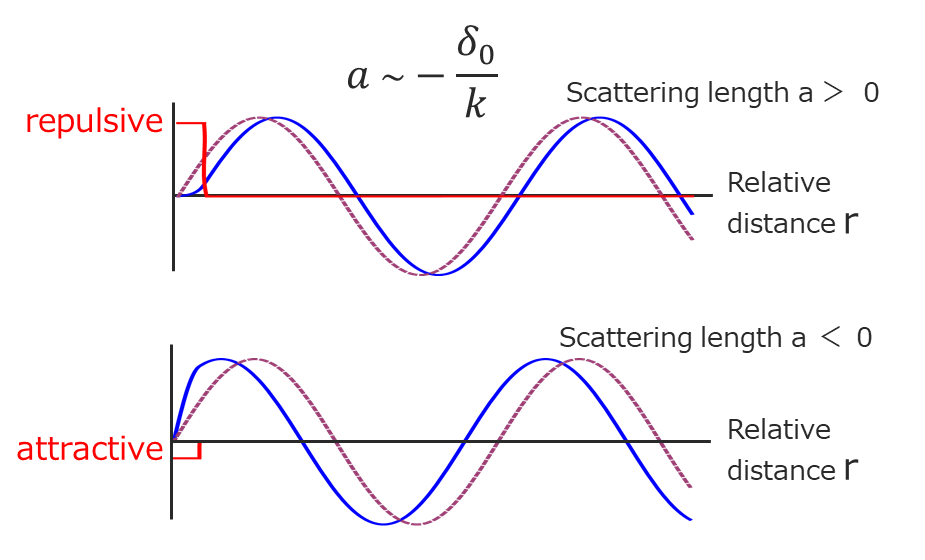
In the above figure, we assumed a rather shallow attractive potential, but as you gradually deepen the potential, a bound state (two-atom molecule) will eventually appear in the vicinity of the dissociation limit. In this case, if the potential depth is slightly raised or lowered from the depth V 0 at which the bound state appears, the scattering length changes drastically including the sign due to the resonant scattering effect.
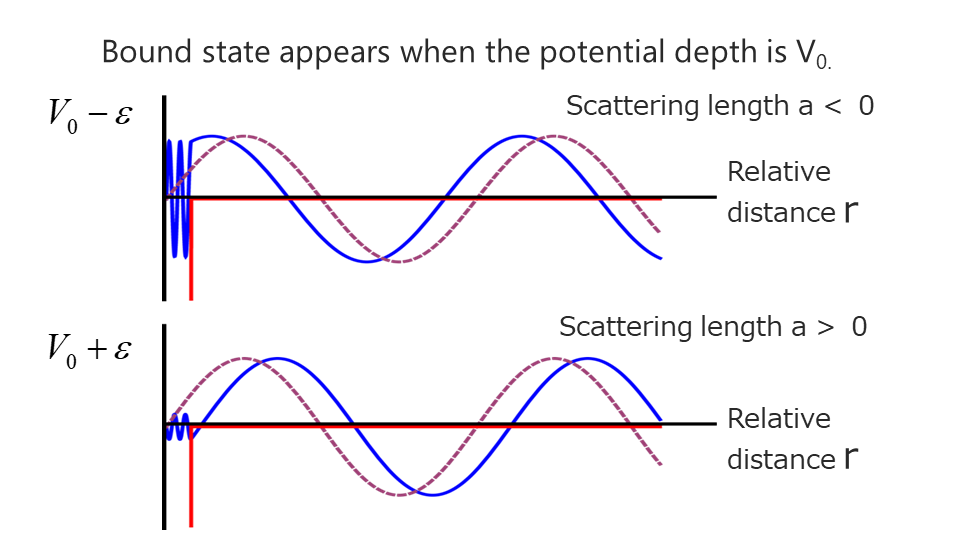
It is impossible to change the depth of the adiabatic potential in the ground state. However, if the energy of the free two atoms and that of the diatomic molecule consisting of other internal states are relatively close each other, it is possible to add a static magnetic field to control the energy difference between them to artificially induce resonant scattering. Such a Control of scattering length a is called Feshbach resonance.
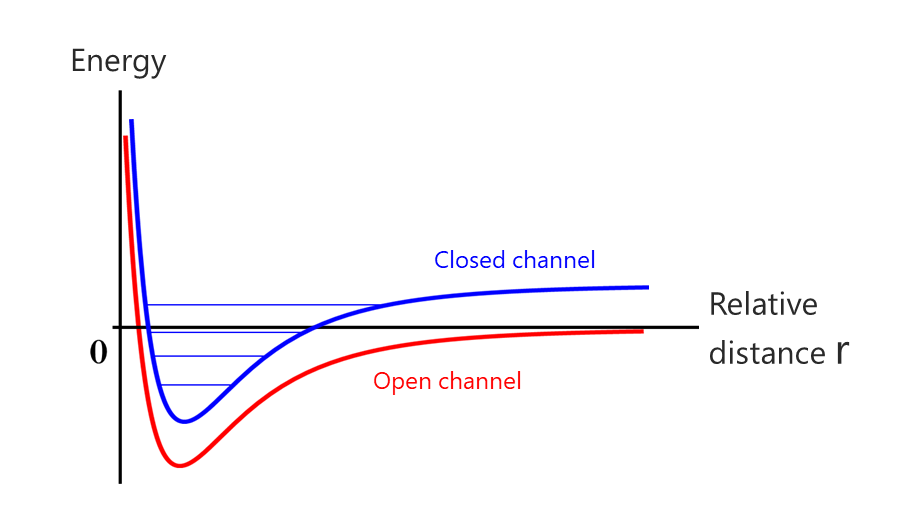
In the experiments of Cr, Er, and Dy, a static magnetic field was employed to control the scattering length. However, if a static magnetic field is applied, the spin direction of atoms is fixed, instead of controlling the scattering length. Note that the long-range anisotropic interaction between the magnetic moments does not preserve spin and orbital angular momentum individually, but has the property of coupling them. If atoms having a large magnetic moment are condensed under zero magnetic field, a very rich ground state quantum phases accompanied by a spin texture and a quantum vortex are expected to emerge. Some of these quantum phases can involve spontaneous symmetry breaking related to spin chirality, so they are fascinating research targets. However, to observe such phenomena, scattering length must be controlled without applying a static magnetic field.
Therefore, we focused on europium atoms (Eu: mass number 151, 153) with a large magnetic moment and mass. There is a possibility of controlling scattering length of Eu atoms even under zero magnetic field. Unlike Cr, Er, Dy, which has been used for studies of magnetic quantum gases, the bosonic isotope of Eu has a hyperfine structure in the ground state. By irradiating the atoms with microwave nearly resonant to the hyperfine splitting of the ground states, it is possible to control the scattering length while ensuring the spin degree of freedom. This is because two atom collision occurs by passing through the bound state connected by the microwave.
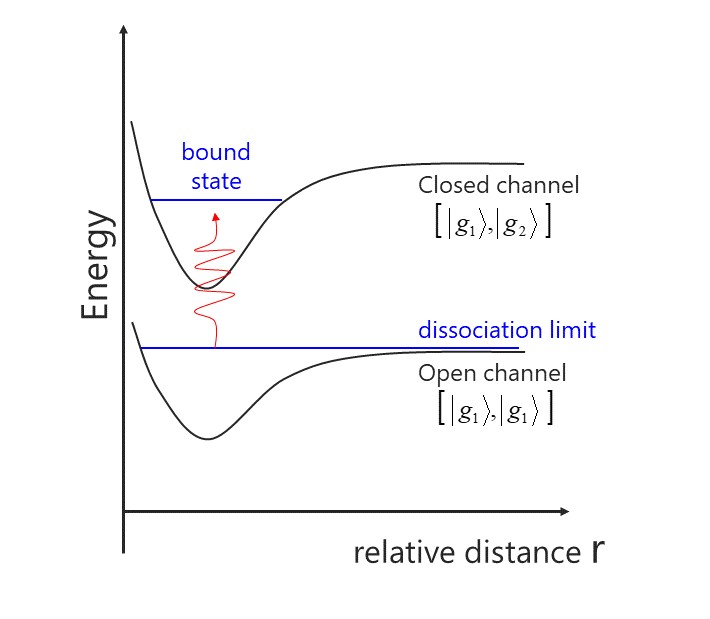
The figure below shows the energy structure of Eu atoms. As can be seen, the energy structure of Eu is very complicated, and there was no report on laser cooling of Eu atoms.
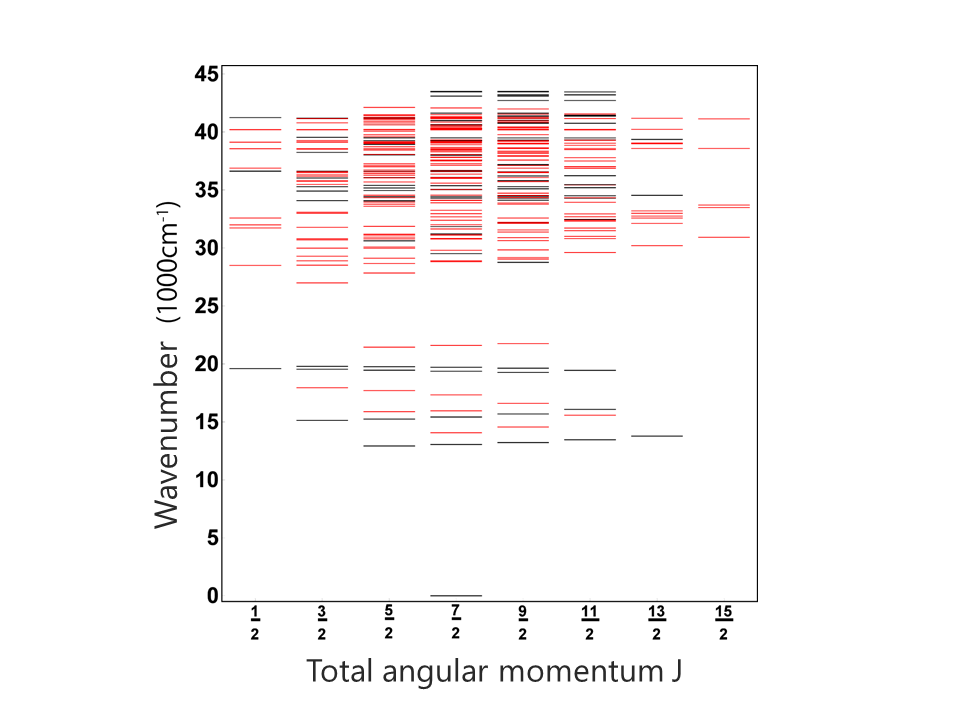
We have succeeded in laser cooling of Eu atoms for the first time in the world by exciting Eu atoms to a metastable state. The yellow light in the center of the picture corresponds to the fluorescence from magneto-optically trapped metastable Eu atoms. We are now aiming to explore novel quantum phases through the creation of Eu condensate.
